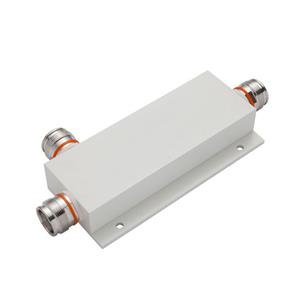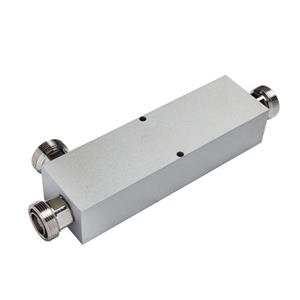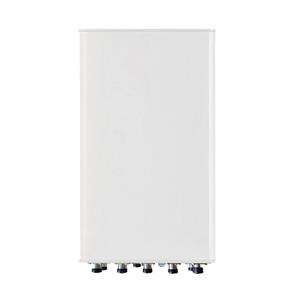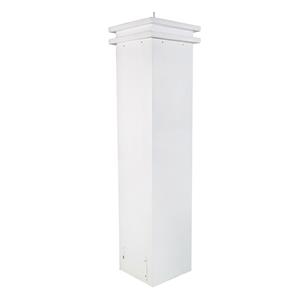Dish plans to roll out 5G in 25 key markets by June buildout deadline
Under its commitment to the FCC, Dish needs to cover 20 percent of the U.S. population with 5G by the middle of this year, and expand to 70 percent by June 2023.
During Dish Network's fourth-quarter and year-end earnings call, CEO Erik Carlson said Dish will achieve this milestone, and the wireless network team has made significant progress in the fourth quarter and in recent weeks.
"We are currently ready to deploy 5G in over 25 major markets by the deadline," Carlson said.
The 25 markets include: Albuquerque, New Mexico; Charlotte and Raleigh-Durham, North Carolina; Cleveland and Columbus, Ohio; Dallas, El Paso, Fort Worth and Houston, Texas ; Hartford, Connecticut; Indianapolis; Kansas City; Nashville; Norfolk, Richmond and Virginia Beach, Virginia; Oklahoma City; Orlando; Reno; Rochester, New York; and Syracuse ; Salt Lake City; Spokane, WA; Springfield, MA; St. Louis; and Stockton, CA.
Other smaller cities span multiple states, including Alabama, Arizona, Colorado, Iowa, Michigan, Mississippi, Missouri, Tennessee, and Wyoming, among others.
According to Dish's 10-K filing, the company has more than 50 markets under construction, compared with 35 in the fourth quarter of last year.
It also needs the necessary capital to fund its deployment plans for the remainder of the year, when more spending is expected than in 2021.
According to Carlson, Dish already has a 5G network up and running in Las Vegas, with friends and family serving as beta testers, and plans to expand access to more customers through its "Project Genesis" in the coming weeks. Dish was initially expected to launch its service in its first market, Las Vegas, in the third quarter, but that plan has been delayed several times.
Las Vegas' O-RAN network is up and running, and there's still work to be done
Dish Network chairman Charlie Ergen said a key positive on the networking front since the last quarterly report is that 5G in Las Vegas is operating in standalone (SA) mode, based on O-RAN principles and using AWS cloud-native architecture.
It also features Voice over NR (VoNR) -- something that's only possible with SA 5G, and others like T-Mobile have been working hard to make progress.
"This is the most advanced network in the world," Ergen said on the conference call, which looks more like an IT network than a wireless network. In the end, he noted, Dish did more technology development with suppliers than expected.
"When it works, it works really well," he said of the Las Vegas Network. "We still have work to do, we're not ready to play football."
Some of these involve optimization in certain areas and markets that the company is preparing to launch. Still, Ergen said the technical challenges of some of the core activities that Dish needed to accomplish have been addressed.
The sheer amount of work caused delays to the plan, and he acknowledged that Dish ended up with the plan six months behind the original schedule, citing VoNR in particular.
Chinese operators and others have been working on VoNR. Those operators, too, have run into trouble, which means Dish can't quite follow in their footsteps, Ergen said.
"We had hoped to rely more on them" but it ended up being a bigger part of development.
On the other hand, especially with O-RAN-based networks from multiple different vendors, like Dish, it has to act as a system integrator.
"Ultimately, we found that we had to be the systems integrator, which is not a role we wanted to take," he said, "but with all the suppliers, someone has to be the middleman, the glue that holds them together. . We're probably a lot more involved than we think."
He acknowledged that it may have been a waste of time, but said a lot of lessons had been learned and Dish was "definitely going to move at a very fast pace now".
So what else needs to be done before a commercial launch?
Ergen mentioned ongoing network optimizations as well as regulatory issues -- specifically the E911, which Dish hasn't addressed yet, but it needs to address before commercial services roll out. The E911 uses third-party software and doesn't have as much control as the company wants, he said. Other projects include making sure phone makers support VoNR and Dish frequency, and developing a marketing plan.
"These things are not difficult in themselves," but they all need to be done at the same time, Ergen remarks.
The $10 billion price tag remains
Estimates about construction costs have again raised questions. Dish has long said the total cost of construction is about $10 billion, a figure that some analysts believe is too low.
Ergen reiterated that $10 billion is a real number.
Dish's capital expenditures on its 5G network will be around $1 billion in 2021 and are expected to reach $2.5 billion in 2022.
Ergen said Dish will spend $3.5 billion by the end of the year, which is far more than the 20% population coverage it needs, and hinted that the company is confident in how Dish can stay within its $10 billion target. The 2022 capex figures also include some advanced spending in the market needed to reach the 70% milestone in 2023.
Other elements that help the company stay within the overall goal are back to the very nature of its cloud-based network, which Ergen said reduces labor costs because it can automate and provision in a way that competitors can't.
Dish spent money on licenses for C-band and CBRS spectrum, and recently spent $7.3 billion on adjacent 31 MHz of 3.45 GHz spectrum.
"We can use C-band and CBRS to fill some of the coverage gaps," Ergen said, noting that it would be very expensive to build macro cells and the like in places like Denver. "Part of our investment in C-band and CBRS actually pays dividends for us, saving on construction costs on the back end."
As for when network spending will hit $10 billion, Ergen noted that the amount will cover construction through 2025.
"At our pace...there are so many base stations every month, and that's going to be the case for the next three years."
Funding for the network deployment will continue into next year, but he expects the company may need to raise capital sometime in 2023.
Dish reported an EBTIDA loss of $61 million in its 5G network deployment unit, better than Wall Street expectations of $97.3 million, according to a report by MoffettNathanson.
Analysts at MoffettNathanon, led by Craig Moffett, noted progress in building more markets, but they remained skeptical ahead of the earnings call whether the $10 billion budget was reasonable, while acknowledging that there are still lingering questions about how Dish plans to leverage its network. There is a problem.
According to Moffett, the $10 billion does not include a tower lease commitment, which the company said has "significantly exceeded that amount."
Dish had earlier signed deals with major tower companies as well as smaller infrastructure companies.
Private networks are more attractive than fixed wireless networks
Dish also sees fixed wireless access as a potential use for its spectrum business, but believes it is more economical to use network capacity to support private networks.
"If people want to, let them run their business in their own cloud or a public cloud and use some of our frequencies privately to make sure they have access to the data," Ergen said.
Private networks may be using data 24 hours a day compared to consumers, which he said is another way to increase network capacity usage.
When doing the math on an economic model of a network that currently uses around 25 percent of its available capacity, if you increase it by a percentage or two, even as high as 35 percent, then "for all wireless providers, this has Huge incremental revenue potential."
While Dish is currently actively working on some projects in the space, Steven Bye said the company doesn't expect any substantial content in private networks during 2022, but expects that to happen as momentum builds in 2023 .
Ergen cited companies like Amazon, Cisco or Dell as major players in the space, and said "hopefully we'll be working with one or more of these companies to make sure we're launching the right product at the right time."
Dish acquired Boost Mobile to retail the wireless business as an MVNO. The company lost 245,000 net subscribers in the fourth quarter of 2021, and had 8.5 million retail wireless customers by the end of 2021.
Dish is hosting an Analyst Day event on May 10.




